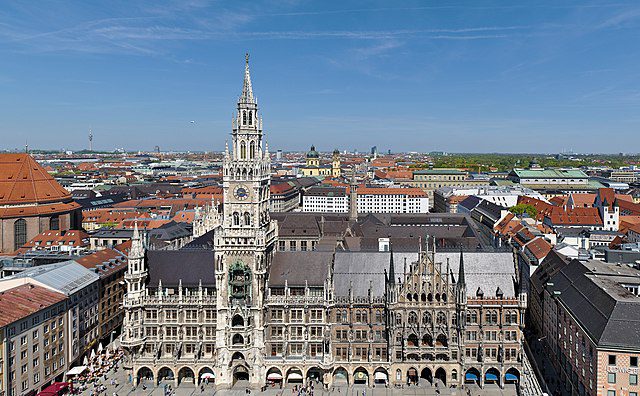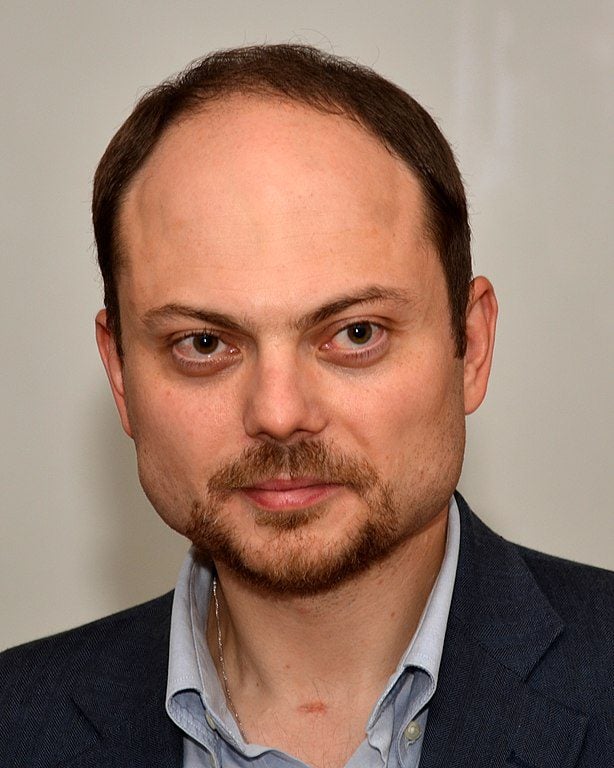Vladimir Kara-Murza and a Friend
Significant moderation analyses suggest that a stronger relationship with God predicted fewer depression and anxiety symptoms for youth whose mothers used more religious coping.

The obituary for our friend Michael Lyon, who died yesterday afternoon, has now appeared. He was one of the most interesting people I’ve ever known:
https://www.legacy.com/us/obituaries/deseretnews/name/michael-lyon-obituary?id=35508241
I wrote yesterday about our visit to Michael’s room at Utah Valley Hospital — by which time, sadly, we could not communicate with him — and about noticing the prominent display of the Pride Flag at several locations on the hospital’s campus. (See “Of Rainbow Flags and Anarchy.”). One of my readers here, who posts under the moniker tangata neneva, offered a comment that I found quite helpful. So I’m sharing it here so that more readers will see it:
Utah Valley Hospital is owned by Intermountain Health Care. Often healthcare facilities and other places fly the flag to indicate “this is a safe place.” Local government buildings often fly a variety of flags on the third pole, including occasionally the rainbow flag. Most often it is a POW flag or the like. Recently there was a lawsuit against the City of Boston. The city had a policy that allowed groups to fly their flag for a day if they used the city hall for an assembly or meeting. This included LGBTQ groups flying the rainbow flag for assemblies in front of city hall or meeting in the building. But the city disallowed a Christian group (Camp Constitution) from flying their flag when they held an assembly at city hall in 2017. The US Supreme Court ruled against the city for discriminating in May 2022. Therefore, if governments allow the rainbow flag to be flown, they need to allow equal access to flags of all groups served by that government.
That makes sense to me, and I’m fine with the presence of the Pride Flag, so understood. Another reader, though, shared this item with me out of England, and I certainly see its author’s point of view, as well:
“It’s time to take down the Pride flag”
Just a side note: We saw Ukrainian flags on government and other buildings all over Germany during our recently-concluded visit there. I had absolutely nothing against this, of course. Quite to the contrary, I was very pleased. I myself own a tee-shirt with the Ukrainian flag on it, and I strongly support Ukraine’s resistance to Vladimir Putin’s immoral aggression against it. Even so, I was particularly struck by the multitude of Ukrainian flags flying atop the various buildings on Berlin’s Museuminsel (“Museum Island”) during the last full day of our tour. It was a beautiful day, and I was suddenly aware that I could see a Ukrainian flag gently rippling in the breeze on the pinnacle of every single one of the museum buildings that I could see. For just a moment, I felt as though we were in Ukraine rather than in Germany. After all, flags can be powerful symbols. It was more than slightly jarring, for example, after we had spent two or three days in Munich’s Marienplatz, which is dominated by the massive but beautiful neo-Gothic Neues Rathaus or “New City Hall,” to visit the former concentration camp at Dachau, in the Munich suburbs, and to see a display there that included a 1930s photograph of the Neues Rathaus draped in red, white, and black Nazi banners bearing the swastika.
Furthermore, incidentally, a critic of mine has written to tell me that, contrary to what I wrote yesterday, Utah Valley Hospital belongs to the Church of Jesus Christ of Latter-day Saints. But he’s wrong. It doesn’t.

Wikimedia Commons public domain photograph
Here, by the way, is another item out of England, which has kindly been brought to my notice by yet another reader:

I can’t do very much. I’m a realist. Vladimir Putin and his revanchist regime aren’t exactly moved by appeals to morality or motivated by surveys of sensitivity-trained focus groups. But I’ve resolved to do what little I can do to keep his name before at least my little piece of the public. Please read this piece:
“Russia’s Imprisoned Democracy Leader, Vladimir Kara-Murza: A brave man in dark times”
***
Just so you don’t grow soft and spoiled, though, and just so you remember that life isn’t always a bed of roses, I close with a quartet of appalling horrors that I’ve selected for your indignation from the unfathomable abyss of the Christopher Hitchens Memorial “How Religion Poisons Everything” File©. Full disclosure: The first of them was actually called to my attention by Dr. Lynn Johnson, who, like me, likes to climb into the bathyscaphe occasionally and take a plunge down into the depths of the Hitchens File
“Adolescents’ relationship with God and internalizing adjustment over time: the moderating role of maternal religious coping,” Journal of Family Psychology(2014), by Marcie C. Goeke-Morey (Catholic University of America), Laura K. Taylor (University of North Carolina at Greensboro), Christine E. Merrilees (University of Notre Dame), Peter Shirlow (Queen’s University Belfast), and E. Mark Cummings (University of Notre Dame)
A growing literature supports the importance of understanding the link between religiosity and youths’ adjustment and development, but in the absence of rigorous, longitudinal designs, questions remain about the direction of effect and the role of family factors. This paper investigates the bidirectional association between adolescents’ relationship with God and their internalizing adjustment. Results from 2-wave, SEM cross-lag analyses of data from 667 mother/adolescent dyads in Belfast, Northern Ireland (50% male, M age = 15.75 years old) supports a risk model suggesting that greater internalizing problems predict a weaker relationship with God 1 year later. Significant moderation analyses suggest that a stronger relationship with God predicted fewer depression and anxiety symptoms for youth whose mothers used more religious coping.




